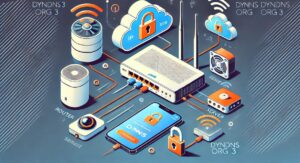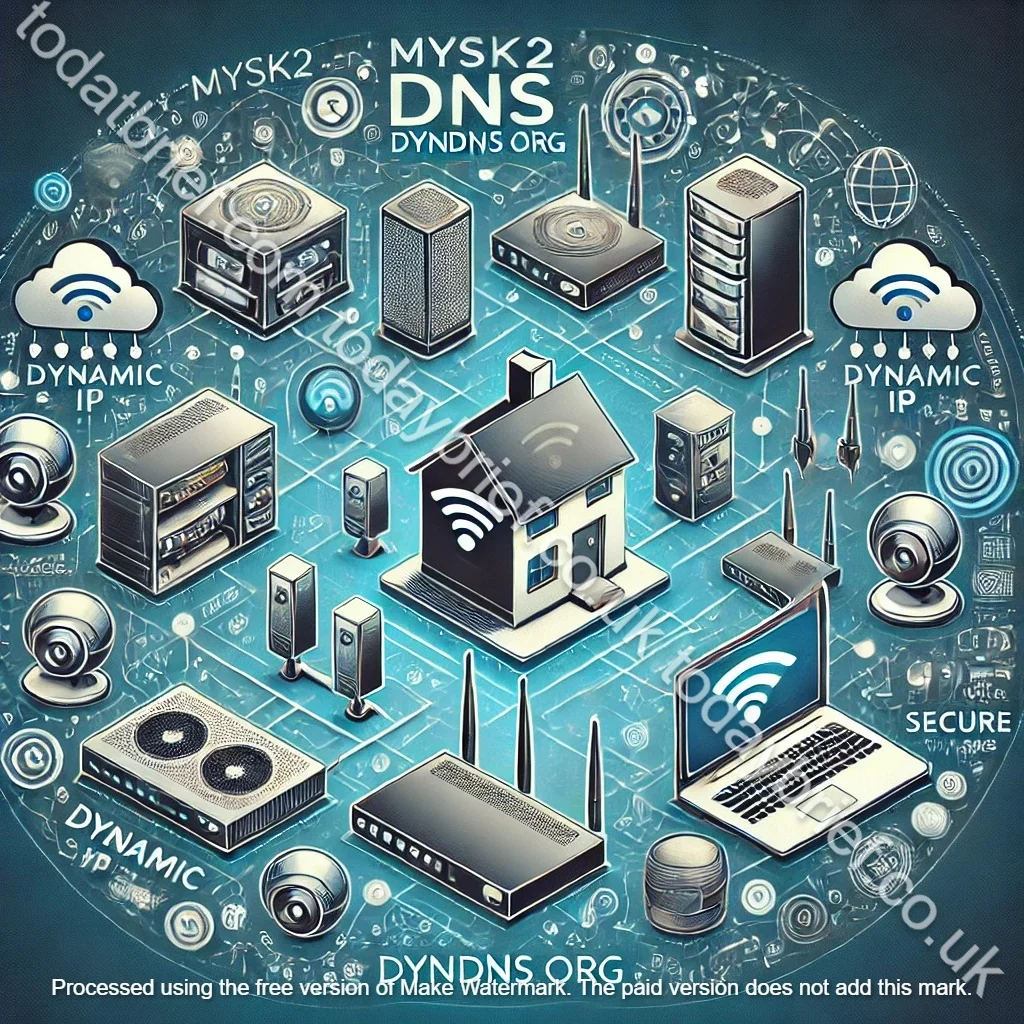Understanding Mysk2 Dyndns Org 3
mysk2 dyndns org 3 serves as a dynamic Domain Name System (DNS) service primarily designed to facilitate the connection between an IP address and a user-friendly domain name. Unlike static IP addresses, dynamic IP addresses can change frequently, which can create challenges for remote access applications, such as hosting servers or accessing cameras from various locations. Mysk2 Dyndns Org 3 effectively mitigates these challenges by offering a platform that updates domain names automatically whenever a user’s IP address changes. This capability ensures that the domain remains accessible, thus enhancing user experience and connectivity.
Among the essential features of Mysk2 Dyndns Org 3 is its compatibility with a wide range of devices and settings, which makes it an excellent choice for both home users and organizations. Small businesses often benefit by using this dynamic DNS service to maintain connectivity for remote systems, ensuring that employees can access critical resources regardless of changing network configurations. Larger organizations can also leverage Mysk2 Dyndns Org 3 as part of a more extensive IT infrastructure, particularly when dealing with dispersed networks or multiple locations.
In terms of technical operation, Mysk2 Dyndns Org 3 integrates seamlessly into the DNS framework, using methods like DNS updates to communicate changes in IP address status. Users can set up their network devices to communicate with the Mysk2 Dyndns Org 3 servers, sending updates whenever an IP address changes. By employing this dynamic DNS service, users release themselves from the hassle of manual IP management, allowing for more efficient and reliable operations. Overall, the versatility and reliability of Mysk2 Dyndns Org 3 make it a valuable resource in the realm of dynamic DNS services.
Setting Up Mysk2 Dyndns Org 3
To successfully set up Mysk2 Dyndns Org 3, it is essential to follow a structured approach that includes account registration, configuration of necessary settings, and linking compatible devices. This guide provides a comprehensive walk-through to ensure a seamless experience for both novice and experienced users.
The first step in the process is to register for an account on the Mysk2 Dyndns Org 3 platform. This can typically be done by visiting the official website and locating the registration section. Users will need to provide standard information, including email addresses and a chosen password. After registration, ensure that you verify your email address through the confirmation link sent to your inbox, as this step is crucial for account activation.
Upon successfully logging in, it is important to configure the necessary settings within your account. Users should navigate to the DNS settings tab where they can specify the hostnames they wish to create. Selecting a memorable hostname is recommended, as this will be the address used to access your devices remotely. Additionally, those settings should correspond with your network type — static or dynamic, depending on your internet service plan.
Linking your devices to Mysk2 Dyndns Org 3 is the next vital step. Make sure that the devices are set to automatically update their IP addresses with the Mysk2 DynDNS service. This can often be achieved through the device’s settings menu, specifically in the networking or connection settings category. If you encounter any issues during this linking process, consulting the troubleshooting section on the official Mysk2 website can provide valuable insights.
Lastly, ensure that any necessary permissions and firewall settings are adjusted to allow for uninterrupted access. Configuring your router’s settings to forward the required ports to your device enhances network efficiency. Following these steps meticulously will help in fully establishing Mysk2 Dyndns Org 3, enabling effective management of remote connections.

Benefits of Using Mysk2 Dyndns Org 3
The use of mysk2 dyndns org 3 brings several significant advantages, particularly for individuals and businesses seeking reliable remote access to home networks. One of the primary benefits is the improved accessibility it provides. Users can easily connect to their home devices, whether it’s for monitoring security cameras, managing home automation systems, or accessing files remotely. For instance, a small business owner might utilize mysk2 dyndns org 3 to connect to the office network from a remote location, ensuring they can manage operations effectively regardless of their physical location.
In addition to enhanced accessibility, mysk2 dyndns org 3 contributes to stability in web and online services. By maintaining a constant connection despite changes in IP addresses, this service ensures that websites and online applications remain functional. An example of this can be seen in online gaming; gamers can rely on mysk2 dyndns org 3 to host servers that maintain connectivity, enhancing the overall user experience by minimizing downtime and interruptions.
Furthermore, the incorporation of mysk2 dyndns org 3 can bolster security measures for users. It allows for more secure connections to home networks by enabling users to establish Virtual Private Networks (VPNs) or other secure access methods. This is especially beneficial for those who work from home, as it ensures sensitive data is protected from potential threats. Case studies have shown that businesses utilizing mysk2 dyndns org 3 for their remote teams experienced fewer security breaches, highlighting its role as a valuable tool in safeguarding information.
Ultimately, the advantages that come with mysk2 dyndns org 3 make it an essential resource for both personal and professional users, enhancing connectivity and security in an increasingly digital world.
Common Issues and Troubleshooting with Mysk2 Dyndns Org 3
Users of mysk2 dyndns org 3 may occasionally encounter a variety of issues that can hinder their experience. Understanding these common challenges and how to troubleshoot them effectively is essential for maintaining a smooth operation. Below is a compilation of frequently asked questions and their respective solutions to help users navigate common pitfalls.
1. Why is my IP address not updating?
This issue may arise due to incorrect configuration settings or network interruptions. Ensure that your router or device has the latest mysk2 dyndns org 3 client software installed. Additionally, check that your dynamic DNS settings are correctly applied. If your IP hasn’t updated, try refreshing it manually or rebooting your router.
2. What should I do if I cannot access my mysk2 dyndns org 3 account?
First, ensure that you’re using the correct username and password. If the issue persists, attempt to reset your password using the ‘Forgot Password’ feature on the login page. If problems continue, consider checking your internet connection or contacting customer support.
3. How do I resolve connection problems with my dynamic DNS?
Connection issues can stem from various sources, such as firewall settings blocking access or incorrect port forwarding configurations. Review your device’s firewall settings and make sure that the ports required by mysk2 dyndns org 3 are open. Additionally, verify that your router’s port forwarding rules are accurate.
4. What if I receive a ‘domain not found’ error?
This typically indicates that the domain you are trying to access is not correctly set up or registered with mysk2 dyndns org 3. Verify your domain settings and ensure your account is active. It may be beneficial to reconfigure the domain settings or reach out to the support team for further assistance.
Being aware of these common challenges and their solutions equips users with the knowledge necessary to enhance their experience with mysk2 dyndns org 3. Proactive troubleshooting can often resolve issues swiftly and minimize downtime.
May Be You Also Read
